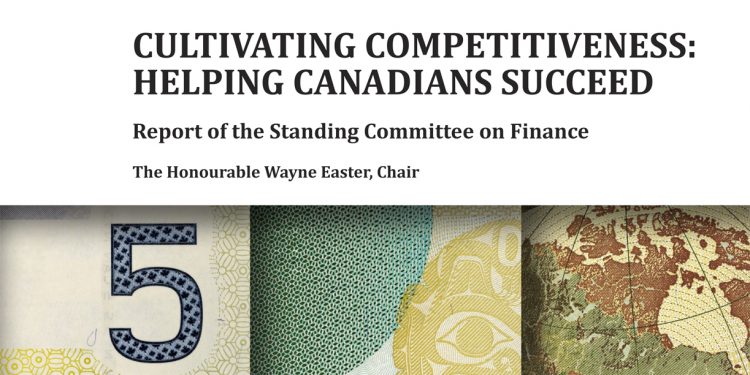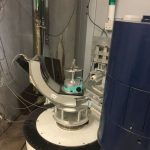Drew Marquardt (DM) was interviewed by Tony Doucette (TD) on CBC radio’s Windsor Morning, April 6, 2018.
Listen to Audio: http://www.cbc.ca/listen/shows/windsor-morning/segment/15535755
Editor’s note: CINS is not opposing the closure NRU reactor per se; rather, CINS is asking for a clear signal from government that it will provide what Canadian researchers need to make use of alternative facilities.
Transcript
TD: A University of Windsor professor and researcher is adding his voice to the growing chorus of those opposed to the Chalk River nuclear reactor. That facility, which dates back to 1957 is famous for producing much of the world’s medical isotopes. And for the work of Nobel Prize-winning physicist Bertram Brockhouse. But lessor known, to the general public, is the important role the facility has played in research using neutron beams. And that’s where Windsor professor Drew Marquardt comes into the story. He’s made regular trips to Chalk River along with his students and part of his research. But with the reactor closing the 31st of March, he says future research by him and many others across the country is being threatened. Professor Drew Marquardt joins me in the studio. Good morning.
DM: Good morning.
TD: Let’s start with a rudimentary explanation of what a neutron beam is, and what a neutron beam can do.
DM: OK. Let’s start with where the neutrons come from. The neutrons are generated in the core of the reactor in Chalk River. And [through] little holes in the reactor, we are able to steal a few neutrons in order to bombard samples. And so, we siphon off these neutrons and we probe biological materials, [or] metals, for example, rail road track…
TD: Somewhat comparable to what we do with x-rays, right? A little more intense, or a little more… Well, I’ll let you explain.
DM: Exactly. So x-rays look at the electron cloud. Neutrons look at the nuclei. So they’re looking at different parts of the atom, which allow them to see different properties. I like to think of it as a kind of atomic microscope. So a traditional microscope you’re looking at cells or different cells interacting with each other… Large-scale in terms of the atom world. With neutrons, we’re actually looking at the interactions and the structures of the atoms in the material, so it’s like an atomic microscope.
TD: And Chalk River, I understand, is the only nuclear facility in the country that makes these available?
DM: Yes, McMaster University is building a single beamline to try to help alleviate the loss, but Chalk River was our major facility, yes.
TD: What kind of research were you doing there?
DM: During my graduate studies, I was examining the interaction of Vitamin E with cell membranes. Believe it or not, vitamin E is an essential nutrient, but we don’t know why it is essential. My research was looking at how vitamin E was interacting with these membranes in an effort to test whether it truly is an antioxidant in the body. And the outcomes of the research: we were able to put a mechanism together that does support that it’s an antioxidant, a preserver of our cell membranes. My research now has moved towards testing the theories: does vitamin E prevent or treat cancer? These are some theories that are out there, but a molecular mechanism and understanding is lacking yet.
TD: And do you need these neutron beams in order to continue with this research?
DM: Absolutely. So the sizes of the phenomenon that I’m examining are far below any kind of optical limit. I’m interested in the atom-atom interactions in the molecule and molecule-molecule interactions.
TD: So what will you do now?
DM: So there are sources abroad that we are able to visit, but there are hurdles again, travelling to a foreign nuclear facility.
TD: Well, let’s be clear. You physically had to travel to Chalk River in order to do this research.
DM: Oh absolutely. And that’s actually what made Chalk River such a great experience for myself as a student and for my students now. They got to go to this world-class facility and see these massive scientific instruments at work, and use them themselves
TD: It sounds to me like unless you can come up with a fair bit of money, this may have the potential to close down your research. Could it be that extreme?
DM. It could be that extreme. With the exchange of going to the States, it’s a lot of stress on a research budget. European facilities – aside from the cost of flying across the Atlantic – they give preference to member countries, and so Canada is not a paying member into any European facilities, which is a hurdle for Canadian researchers to go.
TD: What about the United States?
DM: The United States, we actually had an agreement with the Oak Ridge National Labs, where there would be a certain amount of beam time allocated Canadian researchers, but this agreement unfortunately has come to an end this year as well. And so, what the Canadian Neutron Initiative is looking to do is, bridge this gap, to help set up these relationships at other sources to help materials scientists like myself do their research.
TD: There are other nuclear facilities in this country. Might the solution lie in one or more of those?
DM: Unfortunately not. The power reactors operate at too high a temperature to be useful for studying materials. McMaster does have a small reactor on their campus to train their nuclear engineers, but it lacks the infrastructure to probe materials at any grand scale.
TD: Now beyond your own work and that of your students at the University of Windsor, what does the closure of that facility in Chalk River mean for the big picture, for this country’s role in scientific research?
DM: Canada’s been a leader in the filed for the last 70 years. You mentioned Brockhouse’s Nobel Prize. We’re on the verge of letting that leadership and legacy slip away, which is actually quite sad, because we have been at the forefront of materials science and neutron scattering.
TD: So what would you like to see? What would you like the government to do?
DM: The Canadian Neutron Initiative, the CNI – they have put together a cost-effective solution to help scientists like myself go to other facilities to continue their research. The details of this proposal can be found at cins.ca/cni. It lays out the framework of keeping a critical mass of expertise in Canada, and helping researchers like myself afford to travel abroad.
TD: How long have you been doing this research?
DM: Ten years.
TD: And now it is in jeopardy, in question? How would you characterize the situation you are in as we speak?
DM: It is definitely in question, and if we don’t soon get a clear signal, it could be definitely in jeopardy.
TD: Which would not be good news story for you and certainly not for your students either.
DM: No.
TD: I wish you well. I hope you find a solution.
DM: Well thank you very much.
TD: That’s Professor Drew Marquardt, a biochemist at the University of Windsor. His research includes the study of vitamin E and its effect on our own cells. And his work is threatened by the closure of the Chalk River nuclear reactor.













